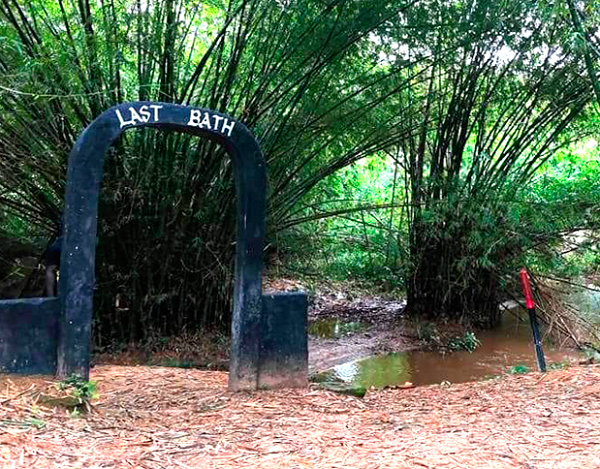
The Assin Manso Slave River: A piece of the slave trade puzzle
The story of the slave trade has its remnants dotted around Ghana.
The heinous crime, one against humanity that saw many Africans sail across oceans to serve as slaves, is told well by the magnificent Cape Coast and Elmina castles and by the forts across our coast.
Advertisement
But there is more to the story of the slave trade than the forts and castles.
Assin Manso, 40 kilometres along the Cape Coast-Kumasi highway in the Central Region, holds an emotional part of the slave trade story that has not been so popularly told.
The Assin Manso Slave River site, known locally as Donkor Nsuo, is where the slaves from the northern part of Ghana and sometimes neighbouring countries had their last bath, before being taken to the slave castles along the coast.
So the slaves from the Salaga, Pikwroro and Saakplii areas, came through the Bono and Nkoranza areas to Kumasi.
Last bath
They would usually then turn eastwards towards the Central Region towards Assin Praso and then to Assin Manso.
Here, the slaves took a rest sorted out and branded. They would then take the “last bath” before taken to the castles.
For most Africans from the diaspora who visit the site, it is an emotional experience.
To Malcolm Frazier Appeadu of the Ghana Tourism Development Company, managers of the facility, the place is significant and symbolic for many people tracing their roots back to the motherland.
First bath
He indicated that the managers of the facility had introduced the symbolic “spiritual bath” at the Ndonkonsuo, the Slave River, which forms part of the Sankofa
Healing Journey for Africans in the diaspora, as part of the global African family return to the motherland.
With the ceremony, returnees are bathed in the Slave River, the symbolic first bath of return, robed in white clothes and adorned with the Yeyaa, spiritual leaves.
Libation is poured, after which they are received at the palace by traditional chiefs. They are then renamed; given local traditional names at a naming ceremony.
According to Mr Appeadu, 100 returnees went through the ceremony last year. “These are very emotional times for our brothers in the diaspora,” he stated.
The facility
The facility has the remains of three Africans who had died in the diaspora and whose remains had been brought back.
It has the Memorial Wall of Return, on which are the portraits of persons who had fought for the emancipation of the African.
The facility also has a video room where patrons can watch documentaries on the slave trade. It also serves as a chapel, where patrons could pray and have communion with ancestors.
Mr Appeadu said the managers had also introduced the night tours where patrons are symbolically shackled, made to relive the bath and the walk from the river to the facility with lamps.
He said if a people did not know where they came from, they would not understand their present or know where they were going.
He urged Ghanaians to visit the facility to understand their heritage and who they are.
Visits
During a visit last April, the Vice President of Costa Rica, Epsy Campbell Barr, said “I feel sad because the past is so sad for our ancestors but happy because we are doing the work. We are working for the people and we are reunited as African people.”
With her on the visit dubbed :“The Return Mission”, was the UN Under-Secretary General, and Executive Director of the UNFPA, Dr Natalia Kanem.
She said “Coming from Africa and being of African heritage myself, it is an opportunity for us to unearth the history of the creativity of the contributions of the high intelligence that so many of our ancestors within Africa and Africans in the diaspora have applied for the benefit of humanity as a whole.”
Both guests connected with their ancestors by symbolically washing their hands and feet in the river, also laying wreaths at the Ancestral Graveyard and writing their names on the Memorial Wall of Return.
Visit the Assin Manso Slave River site, an interesting site of heritage and history; a piece of the slave trade puzzle.




